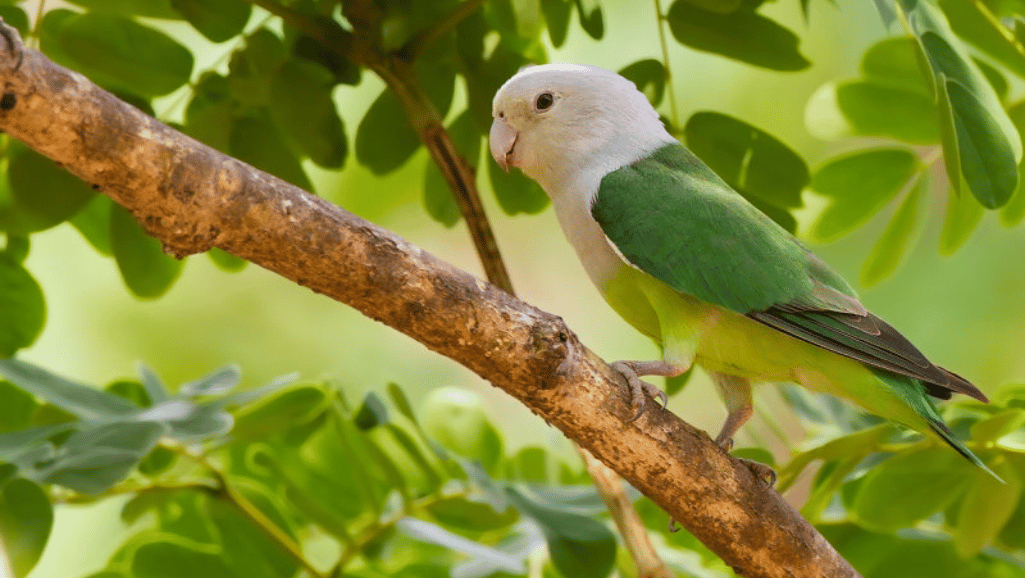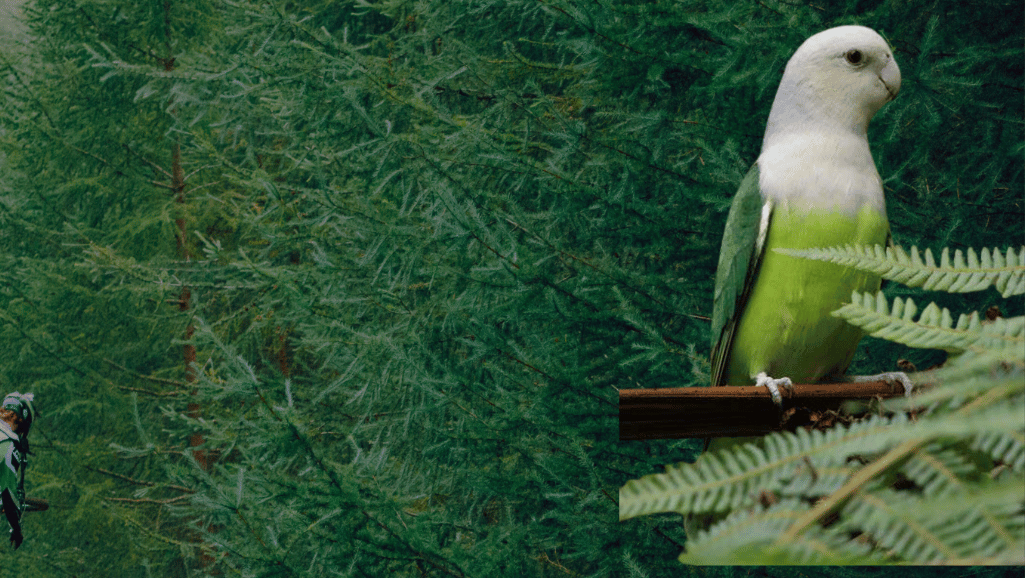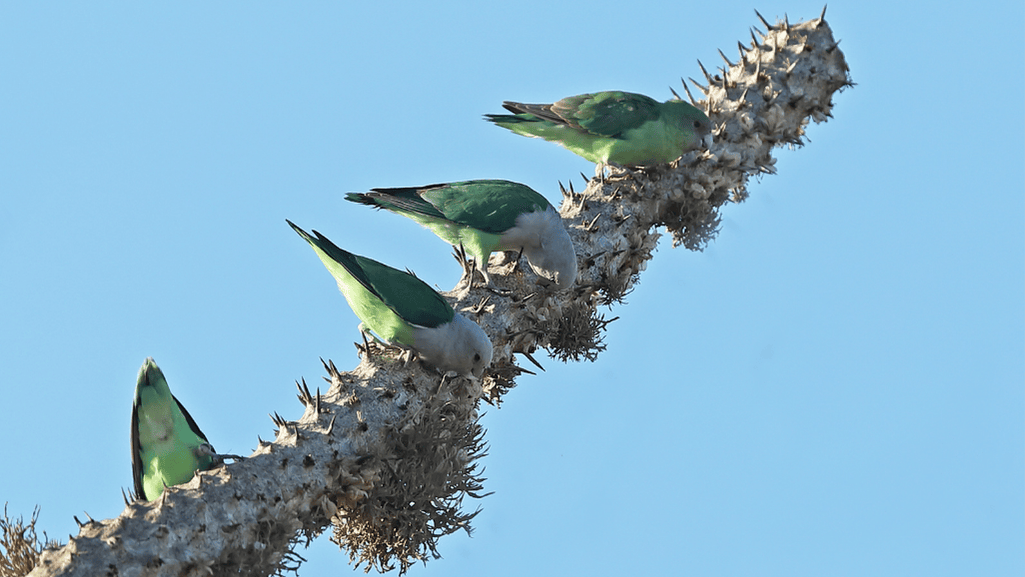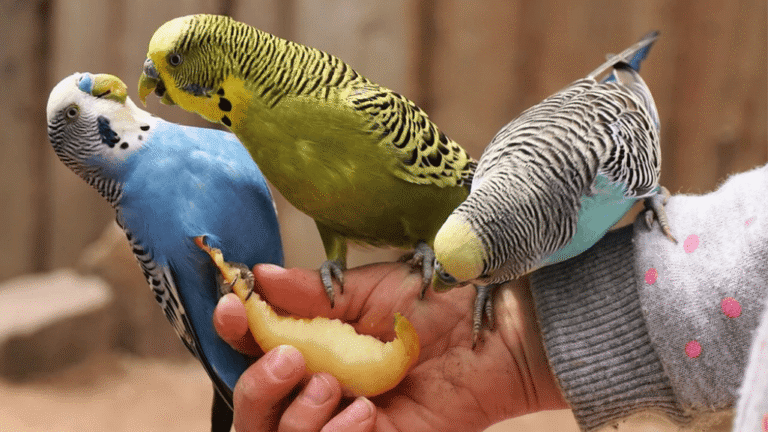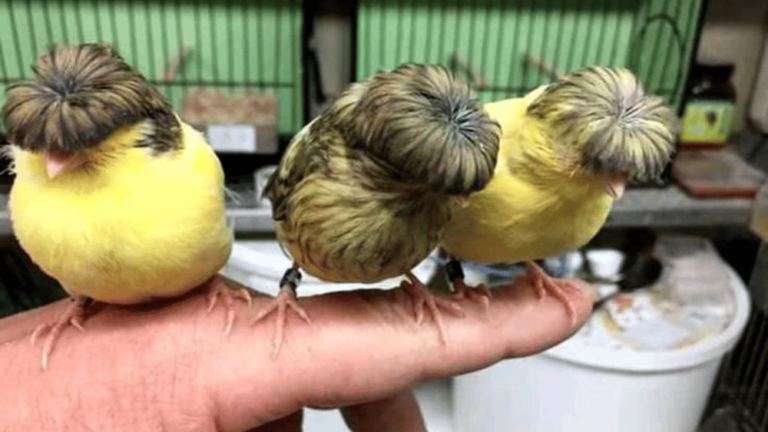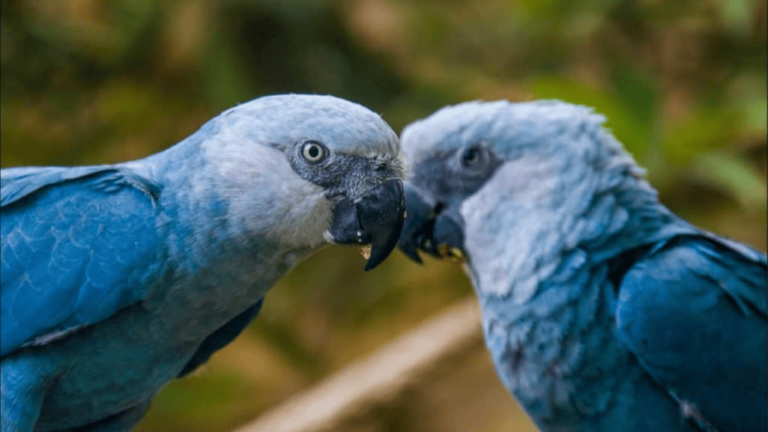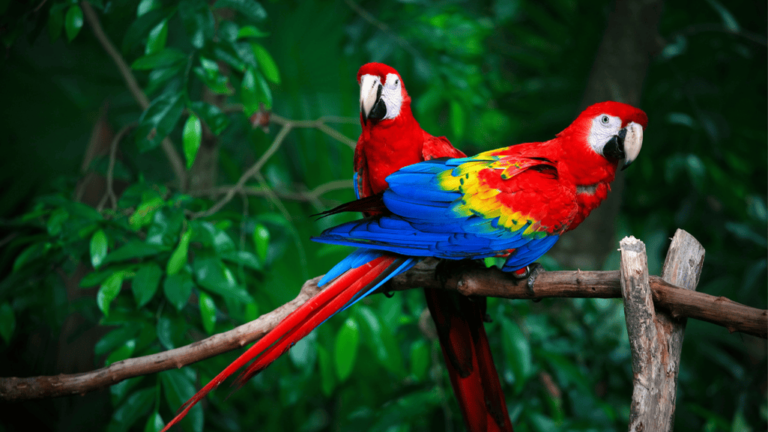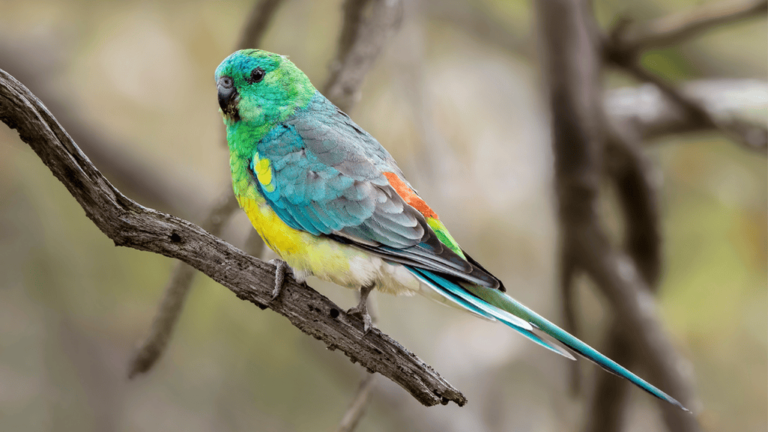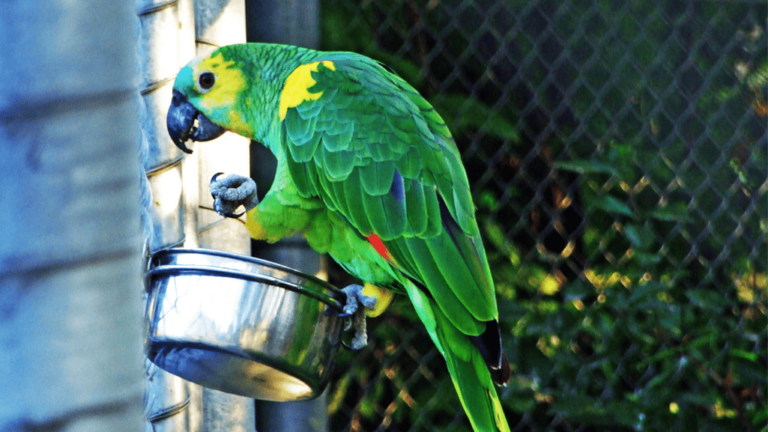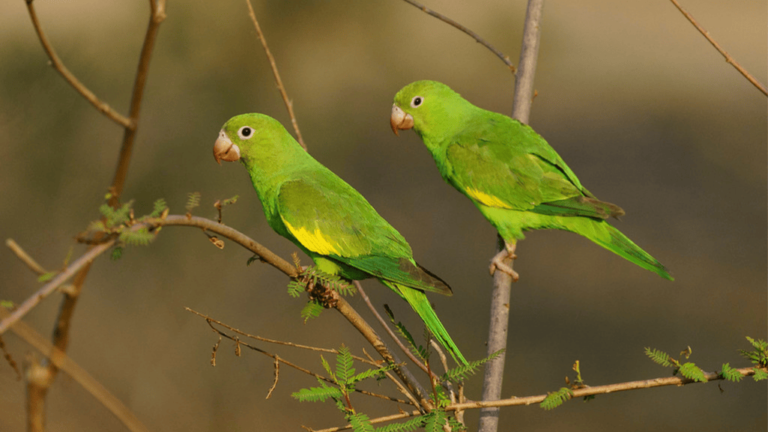The Grey Headed Lovebird, known scientifically as Agapornis canus, is small and beautiful. They have grey and green feathers. They come from Madagascar and are found in Comoros and Mayotte too.
These birds love to be around people and are known for staying with one partner. Taking care of them means more than just feeding them. It’s about understanding their feelings and needs.
It’s important to take good care of these birds to make them live a long life, about 9 years. The IUCN says they are not in danger, but we must still be careful. We can only trade 3,500 birds to help protect them.
Key Takeaways
- Grey Headed Lovebirds are a symbol of commitment and sociability within the avian community.
- With a lifespan averaging 9 years, providing proper avian care is essential for their well-being.
- They require a spacious aviary and thrive in a stimulating environment that mimics their natural habitat.
- Special attention should be paid to their diet, habitat, and the control of common health conditions such as avian polyomavirus.
- Understanding their social and vocal behavior contributes to a harmonious pet-owner relationship.
- As pet owners, we play a significant role in the conservation and ethical treatment of Grey Headed Lovebirds.
- Effective training and behavior management ensures a mutually fulfilling experience for both the lovebird and its caregiver.
Understanding the Grey Headed Lovebird
Explore the fascinating world of the Grey Headed Lovebird, a stunning bird from Madagascar. Known as Agapornis canus, it stands out with its unique looks and social ways. It’s a special bird among lovebirds.
Species Origin and Classification
The Grey Headed Lovebird is part of the lovebird family. It has two types: Agapornis canus canus and Agapornis canus ablectanea. Found only in Madagascar and nearby islands, it has adapted well to its home. Bird lovers and scientists admire its colors and rarity.
Physical Characteristics and Unique Traits
These birds have bright green feathers and almost grey heads. They are 13-15 cm long and weigh 25-36 grams. Their colors are a joy to see and important for bird conservation. Their feathers show the beauty of Madagascar’s nature.
Lovebirds’ Pairing Behavior: A Symbol of Fidelity
True to their name, ‘Agapornis’ or ‘love bird,’ they show deep love for each other. They stay together for life, sharing food and grooming. This shows their deep bond and importance in bird studies.
| Feature | Description |
|---|---|
| Conservation Status | Least Concern (IUCN 3.1) |
| Average Length | 13-15 cm |
| Average Weight | 25-36 grams |
| Breeding Season (Madagascar) | November-December, March |
| Diet | Mainly seeds (grass, canary seed), fruits, vegetables |
Learning about the Grey Headed Lovebird helps us understand this bird and its habitat. It shows why we must protect their homes. This helps all birds and our environment.
Creating the Ideal Habitat for Grey Headed Lovebirds
When caring for lovebirds, especially Grey Headed Lovebirds, their environment is key. They need a space that feels like home, with lots of room and the right setup. This means having a big, well-equipped aviary.
Space Requirements and Aviary Recommendations
Grey Headed Lovebirds need lots of space to stay healthy and happy. They love to fly and play, so a big cage is a must. The cage should be at least 4 feet long, but even bigger is better.
It’s also important to keep the aviary safe from drafts and warm. This helps these sensitive birds feel comfortable.
The table below shows the cage sizes needed for these birds:
| Year | Cage Size | Notes |
|---|---|---|
| 2007 | 80 x 50 x 50 cm | Initial pair setup, conventional horizontal nest box included. |
| 2009 | 2 x 1 x 1.2 m | Updated aviary setup with separate areas for new pairs, enhanced for breeding. |
| Current Recommendations | Minimum 120 x 40 x 40 cm | Recommended to mimic natural habitat and accommodate flight and social interaction. |
The Importance of a Stimulating Environment
To keep lovebirds happy, add lots of perches, climbing structures, and toys. This encourages them to act naturally. A fun environment is key to their health and happiness.
It’s also good to have other lovebirds around. They love to socialize. This keeps them active and content.
Creating a habitat that feels like their natural home is crucial. It helps prevent behavioral problems. Good care means more than just food and water; it’s about meeting their instinctive needs.
Nutrition and Diet Essentials for Grey Headed Lovebirds
Knowing the best lovebird diet is key to keeping your Grey Headed Lovebirds healthy and happy. These birds, from Madagascar, need a diet full of variety and nutrients. A good avian diet includes seeds, fresh fruits, and veggies, tailored to their needs.
Adding fresh foods to their bird diet is great for their health and keeps them entertained. Lovebirds love small seeds and grains, and they enjoy millet as a treat. This helps them forage naturally.
It’s important to add fresh fruits and veggies to their diet. Fruits like apples and veggies like spinach and carrots are not just healthy. They also make their diet more interesting, like foraging in the wild. Here’s a simple guide to help with their diet:
| Food Type | Benefits | Frequency |
|---|---|---|
| Seeds and Grains | Basic nutrition, fosters natural foraging | Daily |
| Fresh Vegetables | Provides vitamins and minerals | Daily |
| Fresh Fruits | Natural sugars and fibers | 2-3 times a week |
| Spray Millet | Excellent treat, encourages foraging | Occasionally |
It’s important to keep their diet balanced to avoid health problems. Make sure they get enough Vitamin D, especially if they’re indoors. Also, always have fresh water for them to stay hydrated.
For more tips on caring for Grey Headed Lovebirds, check out Lafeber’s care guide. Or, learn more about their wild life and conservation at Birds Rabeya Pet.
Grey Headed Lovebird Health and Common Conditions
Caring for Grey Headed Lovebirds means keeping an eye on their health. It’s important for owners to know about bird health and follow good care tips. These birds can get sick, but with the right care, they can stay healthy for a long time.
Preventative Care and Regular Check-ups
Keeping Grey Headed Lovebirds healthy starts with prevention. Regular vet visits are key to spotting health problems early. These visits help check for diseases and make sure they’re getting the right food.
Getting them vaccinated and keeping them free from parasites also helps a lot. This can prevent serious illnesses.
Recognizing Signs of Illness Early
Spotting illness early is crucial for Grey Headed Lovebirds. Owners should look out for signs like:
- Loss of appetite
- Lethargy or decreased activity
- Noticeable weight loss
- Labored breathing
- Changes in feather appearance or molting patterns
These signs can mean different things, like infections or not getting enough nutrients. For example, breathing hard and being tired can be signs of diseases like Aspergillosis, common in African Grey Parrots.
Keeping their environment interesting can help prevent stress and boredom. Toys that they can chew and destroy are great for keeping them active and happy.
By following these care tips and staying alert to health issues, you can help your Grey Headed Lovebird live a long and happy life.
The Social Dynamics of Grey Headed Lovebirds
Learning about social lovebirds in their groups helps us understand bird behavior. This is key for those interested in pet birds or exotic pets. Grey Headed Lovebirds are very social and do best in settings that feel like their natural homes.
These birds don’t like to be alone. They have many social interactions that are important for their happiness. For example, they groom each other, which is not just for cleanliness. It also helps them feel connected and less stressed.
If you’re thinking about getting these birds, it’s best to keep them in pairs or small groups. Being alone can make them unhappy and cause bad behavior. Also, how they act around people can change, and being gentle and engaging with them can help.
It’s crucial for future owners to grasp the behavior of flocks. Research shows that visual signals are key for birds like lovebirds to move and interact. Knowing this can help us care for these exotic pets better. We should make their homes feel natural, with room to fly and explore.
“Grey Headed Lovebirds exhibit intriguing behaviors that, when supported in a captive environment, can prevent many common health and welfare issues.”
Creating a space that meets their social and space needs can make them happier and healthier. This is good for the birds and makes caring for them more rewarding.
For more information, check out studies by Bhagavtula et al. (2011) and Eckmeier et al. (2008). They talk about how important environment and social settings are for the well-being of flying pet birds.
Training and Behavioral Guidance for Grey Headed Lovebirds
Training Grey Headed Lovebirds needs patience, understanding, and consistency. Use treats to gently coax them, which helps them accept handling. This also strengthens the bond between the bird and its owner. For more care tips, check out this resource.
Effective Training Techniques
Begin training your lovebird early, especially if it’s hand-raised. They are more open to learning. Use simple commands and treats in quiet environments to help.
Managing Lovebird Behavioral Challenges
Behavioral issues like biting come from fear or discomfort. Gentle, frequent interactions can help. Focus on building trust and understanding, not force.
Here’s a table with tips for managing Grey Headed Lovebird behavior:
| Behavioral Issue | Cause | Suggested Training Technique |
|---|---|---|
| Biting | Stress or Fear | Positive reinforcement and desensitization |
| Excessive Screaming | Lack of Interaction | Regular and diverse socialization exercises |
| Feather Plucking | Environmental Stressors | Enhancement of habitat and enrichment activities |
Using these methods can make your bird happier and healthier. They’ll be ready for complex social interactions and a long, happy life. Remember, Grey Headed Lovebirds need attentive care and strong training.
Understanding Lovebird Vocalizations and Sounds
The world of lovebird sounds is full of variety and emotion. Owners often wonder what their birds mean when they chirp, whistle, or squawk. Learning these sounds can make your bond with your bird stronger and more meaningful.
The Meaning Behind Chirps, Calls, and Other Vocal Habits
Lovebirds make a wide range of sounds, each with its own meaning. A soft croon or whistle usually means they’re happy. But a loud squawk might mean they’re upset or need your attention.
Chirping is how lovebirds talk to each other. They use it to share feelings or tell you about their day. They can even mimic sounds they hear from you, showing they’re paying attention.
Interaction Tips: Encouraging Positive Vocal Expressions
Knowing how to respond to your bird’s sounds is key. When they chirp, you can talk or whistle back to keep the conversation going. This helps you understand each other better.
It’s also important to watch your bird’s body language. Happy birds are relaxed and make soft sounds. But if they’re upset, they might make loud noises or show tense body language.
Having a regular routine that includes talking and playing with your bird is important. Positive rewards like treats or affection when they make nice sounds encourages them to keep doing it.
In summary, paying attention to your lovebird’s sounds and responding can greatly improve your relationship. From understanding their chirps to enjoying their songs, each sound brings you closer to your feathered friend.
Exercise and Enrichment for an Active Lovebird
Keeping active lovebirds healthy and happy is more than just basic care. It’s about focusing on bird exercise and lovebird enrichment. These birds are full of energy and need a place to stay active and think.
Adding foraging trees is great for them. These trees have different levels and branches with food baskets. It’s like their natural home, where they can move and find food.
| Activity Type | Benefits |
|---|---|
| Foraging | Increase in physical activity, mental stimulation |
| Social Interaction | Enhances emotional health and reduces stress |
| Flight Time | Promotes fitness and overall well-being |
| Auditory Stimulation | Enriching environment with natural sounds or calm music |
| Learning Tricks | Improves cognitive functions and strengthens bonds with caregivers |
It’s also key to give them flight time and exercise in a safe area. This keeps them physically and mentally healthy. Plus, it helps prevent stress. They also need to socialize, like they do in the wild, to stay happy.
Playing soft music or nature sounds can also make their environment better. It keeps them engaged and happy.
- Ensure routine bath opportunities for maintaining feather health.
- Observe your lovebird’s behavior regularly to catch any signs of illness early.
- Implement periodic parasite control and monitoring to avoid diseases.
For more tips on caring for these birds, check out Lovebird care tips.
The Complex World of Lovebird Breeding
Lovebird breeding is a complex process. It requires understanding their behavior and biology. Success depends on choosing the right mates, a good diet, and a suitable environment.
Factors Influencing Successful Lovebird Breeding
Choosing the right mates is key for breeding lovebirds. Breeders look at physical traits like pelvic bones to ensure compatibility. They also need a big enough cage for natural behavior.
A balanced diet is crucial. Poor nutrition can cause infertility, a big problem for captive lovebirds. A good diet helps with breeding success. For more on caring for lovebirds, check out Grey Headed Lovebird Care.
Caring for Lovebird Chicks: The Early Days
The early days of caring for lovebird chicks are very important. They need constant care. Chicks leave the nest after 35-50 days and still need food from their parents for two weeks.
Learning about breeding helps protect endangered species like the Black-cheeked and Fischer’s Lovebirds. For more on breeding endangered species, visit My First Breeding Experience.
By following these practices, we can help lovebirds thrive. This not only improves their lives but also helps preserve them for the future.
Avian Advocacy and Protecting Grey Headed Lovebird Species
In the world of bird protection, the Grey Headed Lovebird is key. These birds are loved for their bright colors and friendly nature. But, they face many dangers that need quick and lasting solutions.
Conservation Efforts: Challenges and Actions
Protecting lovebirds is crucial. They lose their homes and are hunted for pets. Groups worldwide are working hard to save their habitats. They also enforce laws to stop the wild bird trade.
But, there are many obstacles. Birds face dangers from both nature and humans. Their homes are destroyed for farms and cities. This makes it urgent to restore their habitats.
The Role of Pet Owners and Avian Enthusiasts
Pet owners and bird lovers are very important. They help keep bird populations healthy by breeding them responsibly. They also teach others about caring for birds and the harm of exotic pets.
Getting involved in conservation efforts helps a lot. You can donate money or volunteer. This helps protect the Grey Headed Lovebird for the future.
| Conservation Action | Impact | Role of Enthusiasts |
|---|---|---|
| Habitat Protection | Ensures survival in natural settings | Volunteer in habitat restoration |
| Educating Public | Reduces illegal pet trade | Run informative sessions |
| Supporting Legislation | Strengthens wildlife protection laws | Lobby for stronger policies |
With global efforts and awareness, we can save the Grey Headed Lovebirds. Avian advocacy shows us the power of caring and working together.
Conclusion
Grey headed lovebird care is more than a task; it’s a passion and dedication. These small birds, about 5.5 to 6 inches long, bring joy and companionship. Their origins in Madagascar and their unique behaviors make them fascinating to bird lovers everywhere.
It’s crucial to provide a balanced diet, suitable living conditions, and regular health checks. Despite habitat loss, a dedicated owner can create a safe haven for these birds. This environment should reflect the lush habitats they love.
Social interactions and enrichments are key to their well-being. A large cage with plenty of toys keeps them engaged. Reproduction requires careful planning, as they usually lay 3 to 5 eggs.
Lovebirds, whether in pairs or as pets, need attention and care. With proper care, they can live up to 15 or 20 years. This makes their companionship a long-term commitment.
Each lovebird species, like the Rosy-Faced, Fischer’s, and Black-Cheeked, adds charm to our lives. It’s our duty to ensure they live long, happy lives. By understanding their needs and participating in their care, we strengthen our bond with them.
The beauty, intelligence, and affection of grey headed lovebirds are treasures. They require our guardianship and respect, both in captivity and in the wild.



